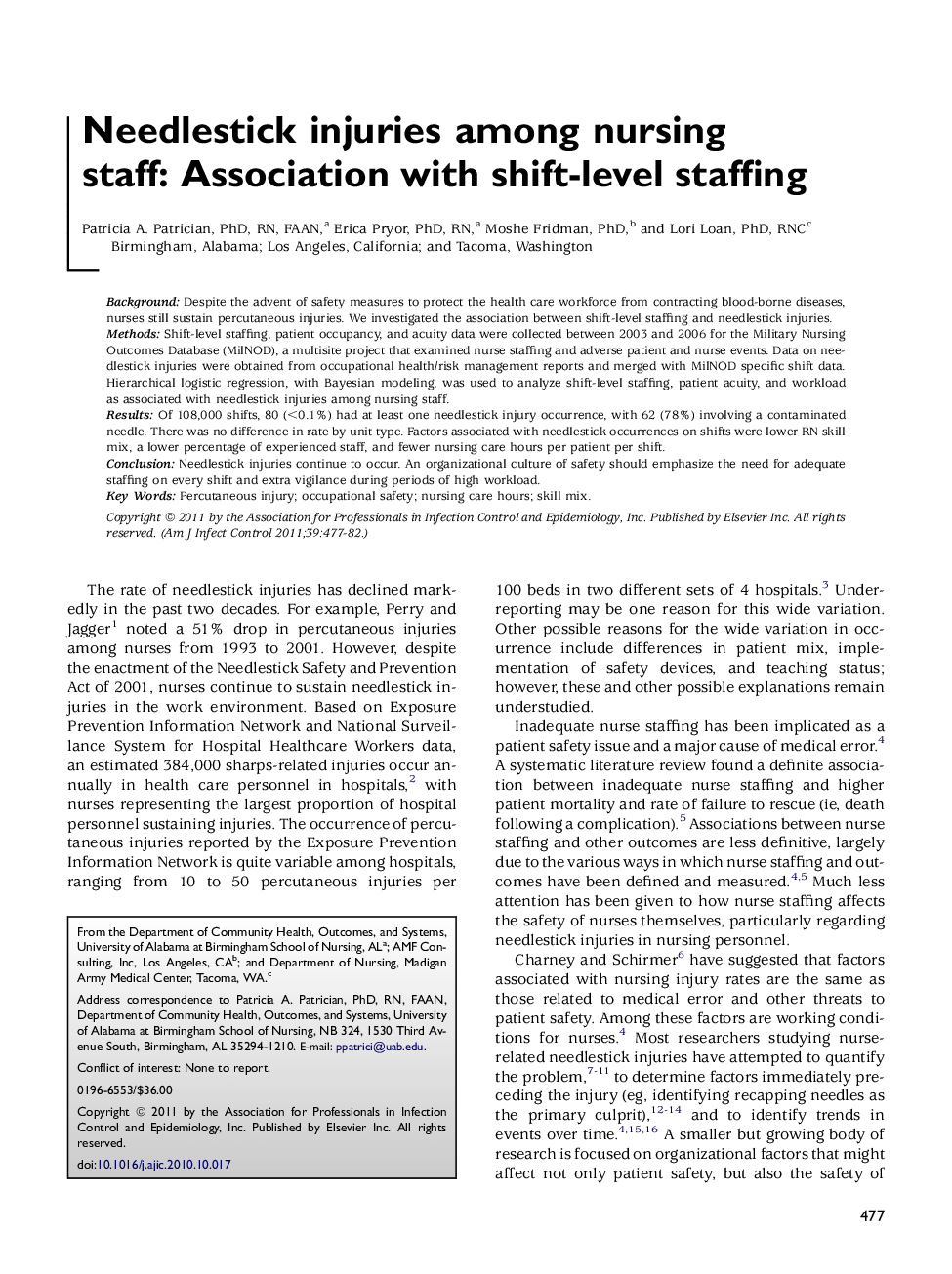| Article ID | Journal | Published Year | Pages | File Type |
|---|---|---|---|---|
| 2638301 | American Journal of Infection Control | 2011 | 6 Pages |
BackgroundDespite the advent of safety measures to protect the health care workforce from contracting blood-borne diseases, nurses still sustain percutaneous injuries. We investigated the association between shift-level staffing and needlestick injuries.MethodsShift-level staffing, patient occupancy, and acuity data were collected between 2003 and 2006 for the Military Nursing Outcomes Database (MilNOD), a multisite project that examined nurse staffing and adverse patient and nurse events. Data on needlestick injuries were obtained from occupational health/risk management reports and merged with MilNOD specific shift data. Hierarchical logistic regression, with Bayesian modeling, was used to analyze shift-level staffing, patient acuity, and workload as associated with needlestick injuries among nursing staff.ResultsOf 108,000 shifts, 80 (<0.1%) had at least one needlestick injury occurrence, with 62 (78%) involving a contaminated needle. There was no difference in rate by unit type. Factors associated with needlestick occurrences on shifts were lower RN skill mix, a lower percentage of experienced staff, and fewer nursing care hours per patient per shift.ConclusionNeedlestick injuries continue to occur. An organizational culture of safety should emphasize the need for adequate staffing on every shift and extra vigilance during periods of high workload.
